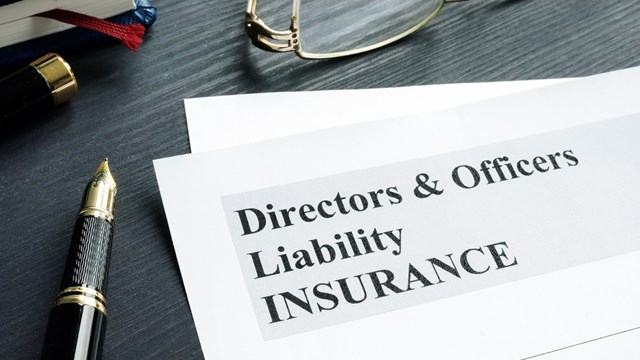
Unless you are in the business, understanding insurance can seem complicated—but for association boards, management companies, shareholders, and unit owners, it's important that everyone is aware of the insurance that is needed and provided on their properties.
"Insuring a condo or co-op is a little different than insuring a typical home, because people don't own the entire building," says Frank DeLucia of Kaye Insurance Associates in New York City. "With a co-op or condo, you need three aspects: property, liability, and a general umbrella policy because just liability is never enough."
According to DeLucia, there are typically two policies involved for protection: the master policy provided by the condo association or co-op board, and a homeowners individual policy, which is typically written on a standard form called an HO-6.
"There are three different definitions in every association's document," says community association specialist Debbie Pasquariello of Boyarin Hourigan Blundell Insurance in Toms River. "The first is the definition of ownership, which is very clear and defines the imaginary line that is the cube of airspace that is owned. The second definition is of maintenance. Typically, where the utilities cross through the imaginary line, that's where [homeowners] begin to be responsible for maintenance of that unit; things like sheetrock, carpets, plumbing and electrical, once it's inside. When you get to the insurance definition, you will see wording like 'the association will insure all the buildings including the units as they were initially conveyed by the builder.' So now the association finds themselves insuring parts of the building they don't own and not responsible to maintain."
Master of Thy Domain
A master policy covers the common areas of a residential complex, such as the roof, stairways, elevators and basements. It also should protect the policyholder from liability situations that could occur on the common property. The master policy may also cover individual units as they were originally built, though it may or may not cover fixtures.
"It's important to know exactly what the master policy covers so that [association members] can purchase appropriate individual coverage for their unit and its contents," says Thomas Mitchell of Mitchell Insurance Services, based in Fords, N.J. "For instance, the HOA's master policy may cover original fixtures, but not improvements. The condo association or co-op board should be able to give them the information they need, or provide them with the appropriate documents that explain the extent of coverage."
Homeowner Protection
The HO-6 policy is owned by a unit owner and insures the contents of the policyholder's unit, any additions or alterations made to the unit, and loss assessments levied against them by the condominium association. It also provides personal liability protection.
"All homeowner policies give you comprehensive personal liability that give you liability on your premises and follows you around," says Pasquariello. "If you are playing golf and you break a window with your golf ball, that's covered under your liabilities. If you walk your dog in the park and it bites someone, that's covered. If you're hosting a family gathering at the clubhouse, the policy follows you there as well."
A homeowner should also get property coverage or personal belongings coverage (some companies call it "improvements and betterment" coverage), which would come into play for things they may do to their unit after purchase. Form HO-6 covers a resident's personal property, and any improvements, additions, private balconies, private entranceways, private garages, and other property that is the owner's responsibility to insure under the condo or co-op's governing documents.
It should be noted, however, that an HO-6 policy only covers physical damage to property if it is caused by a "named peril" identified in that specific policy. Those can include anything from fire, lightning storm, theft, and vandalism to explosion, riot, aircraft, and volcanic eruption—just to name a few.
"This also provides additional living expenses so if your unit burns down and you have to live somewhere else for six months, your homeowner policy provides you with that," says Thomas Heist of Thomas Heist Insurance in Ocean City. "That does not get covered by the association."
Covering It All
As far as the amount of coverage an association should carry, location isn't usually a big factor in determining premium but the age of a building can make a difference, as can the claims history of the building.
"It doesn't make a big difference. All things being equal, counties don't have much difference in price," says Pasquariello. "A similar home in Bergen or Orange County will have similar coverage. Location isn't as important unless you're somewhere coastal. Being too close to the water is different as there are underwriting guidelines as to where [insurance agents] will write."
The age of a building also comes into play somewhat if an insurer is leery of writing a policy for an old building with lots of problems.
"They won't charge more for an older building if it's well maintained," says DeLucia, "but there's a lot to look at. Construction is a big issue. How many firewalls are there? How large? Is it a framed building? These are all things that will affect the coverage. And the more claims a building has filed in the past, the harder it could be to insure."
In a basic policy for associations, flood and earthquake coverage are never automatically covered but they can be added on.
"Some insurance policies will sell you [flood insurance] if you're not in a high risk flood zone," says Heist. "Typically you have to go to Federal Flood or a specialty flood market. Some offer earthquake coverage, but not all."
Associations also have building coverage and business interruption coverage, which covers the loss of maintenance fees in the case of an emergency.
"If there's a fire and 10 units are destroyed, those people are legally obligated to continue to pay their maintenance fees because they are paying to maintain the entire property, not just their units," says Pasquariello, who adds that they don't all do. "An association can get a loss of maintenance fees from people refusing to pay."
Another important coverage that communities—particularly those in older buildings—should be looking at is building ordinance coverage.
"As buildings mature, building codes change," says Mitchell. "They may say something to the effect that if five percent or more of your building is damaged somehow, you may have to rebuild differently. If codes are requiring something different, it's important that you know that and know that you may need to have special coverage for that."
Because of the environmental effects on buildings, DeLucia warns that people should be looking into mold coverage now. "Mold coverage and lead coverage is very important these days and not all the policies cover them," he says. "That's an important thing to look into and check out."
Terrorism coverage has also been available for condo and co-ops since 9/11. The Treasury Department recently extended this coverage through 2005. Under the Terrorism Risk Insurance Act (TRIA), each insurer must make available, in all of its commercial property and casualty insurance policies, coverage for losses due to covered acts of terrorism that does not differ materially from the terms, amounts and other coverage limitations applicable to losses arising from events other than acts of terrorism.
Know What You Need
When an association gets a master policy written, a letter is sent to individual association members informing them of exactly what is insured and covered, so they in turn can have their personal agent purchase the proper HO-6 policy to fill in the gaps in their homeowners' policies.
"Many people have way more insurance than they need because their agents didn't get the letter, or the agent at Main Street USA Insurance doesn't have a clue what we insure," says Pasquariello. "Most are of the mindset that they need to insure the whole inside of their unit when 95 percent of the time the master policy covers the inside of the unit. That's a big deal."
If your personal policy is written on Form HO-6, pay particular attention to the paragraph entitled "Loss Assessment." This paragraph entitles you to collect up to $1,000 for loss assessments charged to you by the condo or co-op association. Loss assessments typically result from losses suffered by the condominium or co-op as a whole, such as damage to a roof. These damages are then passed through to all unit owners.
There are interactions between residents' policies and an association's policy as well. Let's say that a property manager is inside a resident's unit and gets injured - what would cover that?
"Typically, the property manager would sue the unit owner and it's covered by the homeowners policy," says Heist. "They would also be covered by workers comp because they were injured in the course of the job."
Form HO-6 has a unique feature: when a loss is covered by both the condominium's or co-op's master insurance policy and your individual policy, your homeowner insurance will pay only for the balance of the loss that remains after the master insurance policy pays 100 percent of its limit.
Typically a board makes the decision on finding an insurance agent with the guidance of the property manager.
"I recommend boards interview two or three insurance agents and see who has the experience and is most knowledgeable," says Pasquariello. "They need to ask questions about how long [the agent] has been in the field, and how many associations they represent—and always ask for references."
It may seem an obvious point, but when insuring a condo association or co-op, be sure that you use an agent who specializes in writing condo and co-op policies. If you know what is covered by the master policy, and purchase individual coverage for the rest, then you should have the protection you need. Just be sure that you insure to value. Not having the proper value is the most common mistake that people and associations make.
Knowing the boundaries and overlaps between homeowners' and boards' policies is just as important as having insurance in the first place. By asking questions, keeping informed, and taking the time to research and re-examine policies and premiums, your board can save itself money, educate non-board association members, and protect your entire community from exposure to loss.
Keith Loria is a freelance writer living in Westchester County, N.Y.






2 Comments
Leave a Comment